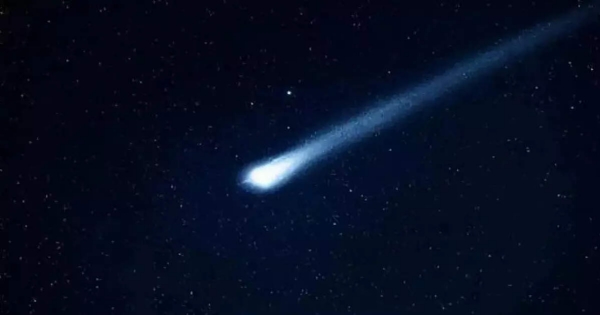Get ready with your binoculars to witness celestial event! 50,000-year-old comet set to light up the sky in February
As per the American space agency, the comet is currently making its way through the inner solar system and is expected to approach Earth in the coming weeks.
Total Views |
Skywatchers and astronomers get ready to witness a major celestial event in the sky, after the stone aged, a comet known as C/2022 E3,- marked by its bright green nucleus and long faint ion tail-, is all set to become visible to the naked eye in the coming weeks.
It should be noted that this comet have last been seen in the sky more than 50,000 years ago.

As per the American space agency, the comet is currently making its way through the inner solar system and is expected to approach Earth in the coming weeks. While giving the information about the development, Jon Giorgini, a senior analyst at NASA's Jet Propulsion Laboratory said, "If C/2022 E3 has ever passed through the solar system before, it would have last been seen in the sky more than 10,000 years ago."
It should be highlighted that astronomers Frank Masci and Bryce Bolin first spotted a comet using the Zwicky Transient Facility (ZTF) at the Palomar Observatory in Southern California, in March 2020. At the time, the comet was inside the orbit of Jupiter.
What is Comet?
Comets are essentially clumps of frozen gases, rock and dust. But when they approach the sun and heat up, they become powerful cosmic objects, spewing gases and dust in a way that forms their iconic shape: a glowing core and flame-like tail that can stretch on for millions of miles.
When you will be able to watch the event?
According to NASA, the newly discovered comet is expected to reach its closest proximity to the sun on Jan. 12. Then, about three weeks later, beginning Feb. 1, the comet is slated to draw nearest to Earth — 26.4 million miles away to be exact. Spectators in the Northern Hemisphere can begin to spot the comet's faint glow in the morning sky this month, as it journeys toward the northwest, according to Dyches. The comet will likely be visible to those in the Southern Hemisphere starting in early February.
How you can watch the comet?
Its glow may be visible to the naked eye, though only in night skies. Observers with binoculars or telescopes have a greater chance of witnessing the rare speck of light.
.

